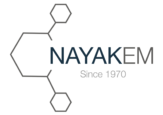PHTHALATES PLASTICIZERS
Benzyl Butyl Phthalate (BBP)
Benzyl Butyl Phthalate is an ester of ophthalmic acid, benzyl alcohol and n-butanol. It is a clear liquid which acts as an excellent plasticizer with strong solvent capability on a wide variety of resins. It is a high solvating, fast fusing plasticizer with high efficiency. It is a plasticizer for polyurethane based materials in the form of colorless, oily liquid. It provides good processing characteristics due to low viscosity and is suitable for transparent or light coloured polymers or coatings. Together, these properties generate savings in faster production throughput, lower oven temperatures, and lower total plasticizer loadings.
- It is a phthalate that is mainly used as an additive for plasticising PVC or other polymers.
- Other examples of applications include: perfumes, hair sprays, adhesives and glues, automotive products, vinyl floor coverings.
- It is a well recognized plasticizer in the flooring industry, and is utilized in processes like case hardening, cleaning/purging, and as a carrier for biocides, pigments, and other additives.
Di Butoxy Glycol Phthalate (DBGP)
Di Butoxy Glycol Phthalates is a phthalate ester obtained by the formal condensation of both the carboxy groups of phthalic acid with two molecules of 2-butoxyethanol. It has a role as a xenobiotic. It is a diester and a phthalate ester.
- Di Butoxy Glycol Phthalate is a plasticizer for cellulose resins and some vinyl resins (PVC, PVAc) and acrylic Resins.
- It is a softener and processing aid for chlorofin rubber, nitrile butadiene rubber, styrene butadiene rubber.
Di Butyl Phthalate (DBP)
DiButyl Phthalate is a colorless or yellow oil, with low toxicity and wide liquid range. It is produced by the reaction of n-butanol with Phthalic anhydride. DBP is used in cosmetics as a perfume solvent and fixative; a suspension agent for solids in aerosols; a lubricant for aerosol valves; an anti-foamer; a skin emollient and plasticiser in nail polish and fingernail elongators (extensions).
- Surface coatings (paints, pigments, floor coatings)
- Car mat backing;
- Polymer emulsions for adhesives;
- In polyvinyl chloride (PVC) compounds such as wire cable tubing and footwear;
- In nitrocellulose lacquers for automotive refinishes, epoxy sealants, leather paint, galvanised iron primers and texture finishes, floor polish and sealers, textile wet processing (processing of textiles, using water) products, ectoparisiticides (drugs that kill parasites that live on the body) for horses and in screen printing inks.
- It is also imported for use as a laboratory research and development chemical in academic institutes and quality control laboratories.
Di Octyl Phthalate (DOP)
DiOctyl Phthalate is the most common member of the class of phthalates, which are used as plasticizers. This colorless viscous liquid is soluble in oil, but not in water. It cannot be extracted with water and can be mixed with all monomers for the softening of PVC paste mixtures. It increases the elasticity of the material and exhibits electrical resistance. Due to its suitable properties and the low cost, DOP is widely used as a plasticizer in manufacturing of articles made of PVC.
It acts as an economical, general performance monomeric plasticizer. It provides a balance of properties and economical cost due to which it is the first choice as the plasticizer for general-purpose applications when requirements are not severe.
- Plastics may contain 1% to 40% of DOP.
- It is also used as a hydraulic fluid and as a dielectric fluid in capacitors.
- DOP also finds use as a solvent in glowsticks.
- Compatible with cellulose nitrate, chlorinated rubber, ethyl cellulose, methyl methacrylate, nitrile, nitrocellulose, polyvinyl butyrate and polyvinyl chloride.
- Used in gaskets and low viscosity plastisols application.
Di Cyclo Hexyl Phthalate (DCHP)
Di Cyclo Hexyl Phthalate (DCHP) is a solid at ambient temeperature and has a good compatibility with most unsaturated polyester resins. It has good adhesion improving properties when it is used in PVC Plastisols. Due to its abnormal crystalline behavior, it is exploited in the adhesive industry in the manufacture of heat activated adhesive system.
- DCHP is used mainly in nitrocellulose coating for cellulose film, improving their heat seal-ability.
- It has good compatibility with gelatin coating and colour couplers used in photographic industry for photographic film.
- DCHP is used in printing ink formulation to improve adhesion and water resistance when applied to paper, vinyl, textile and other Substrates.
- It promotes pores in vinyl latex glove coatings, and is a plasticizer for marine & water resistant coatings.
- Other applications include specialty ink formulations, polyester ink formulations for food contact (break wrapper printing in single use drinking cups), nitrocellulose coatings to seal pores in cellophane, powder coatings (electrostatic coatings), PVC laminate for primal meat packaging, thermo-sensitive, delayed tack adhesive for labels, and in acrylic heat seal coatings.
Di Iso Butyl Phthalate (DIBP)
Di Iso Butyl Phthalate (DIBP) is an oily colorless liquid with a slight ester odor. It is insoluble in water and has Low toxicity. DIBP has excellent heat and light stability. It is the lowest cost plasticizer for cellulose nitrate. DIBP has lower density and freezing point than DBP. It has similar properties as dibutyl phthalate and can be used as a substitute for it.
- Di Butoxy Glycol Phthalate is a plasticizer for cellulose resins and some vinyl resins (PVC, PVAc) and acrylic Resins.
- It is a softener and processing aid for chlorofin rubber, nitrile butadiene rubber, styrene butadiene rubber.
